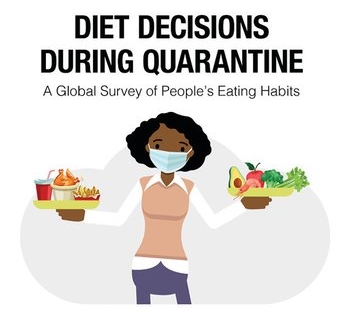INside the OUTside: Winter in Maine; checking out the local ski resorts

 by Dan Cassidy
by Dan Cassidy
This has been such a whirl-wind spring, summer, fall and now we’re heading into a winter such as many of us have never seen before. All this thanks to COVID-19 that has affected lives and has changed the way we live here in Maine and around the world.
I checked out several Maine ski areas, some who held open houses while others plan and watch for the snow to cover their trails in hopes of opening soon.
Sugarloaf Mountain Homecoming
I did get the opportunity to attend the Sugarloaf Ski Homecoming this fall, however rather than greeting friends or visiting booths filled with art show, new and interesting ski gear and ideas of what’s new in the ski industry.
Things have changed. The base lodge was just about empty and the crowds were minimal to say the least.
This ski season is going to have significant changes including parking in the parking lots, social distancing, wearing masks and/or wearing goggles, boarding chairlifts with spacing on the chairs and many other things that we all took for granted in years past that have all changed including locker room spacing, restaurant or food consumption that will have new rules. Also, to take some of the waiting in line to purchase day tickets, a new kiosk has been built so transactions can be done outside with new kiosk machines to take place of personal ticket sales.
The base lodge won’t be able to accommodate gear and bag storage and the Mountain staff has many strict changes that will be enforced this season.
HOLD ON ….WORD HAS JUST BEEN RECEIVED … Sugarloaf and Sunday River are scheduled to open Monday of this week! That’s great news for skiers and snowboarders who can make it to these ski resorts over Thanksgiving!
Sugarloaf getting ready to open
The base lodge at Sugarloaf will have strict indoor capacity access, according to staff management. Capacity will be strictly limited inside the base lodge. Gear storage and changing will not be permitted and guests should come prepared to boot up in the vehicle parking lots and you should carry gear in small day packs. Minimal time indoors should be expected.
“This will be an interesting winter for sure,” Noelle Tuttle, Communications Director said. “While we still don’t know exactly what the landscape will look like, we’re fully committed to opening safely for Sugarloaf’s 70th winter season.”
According to Tuttle, all ticket sales and guest service needs will be managed through the outdoor ticket windows at the Base Lodge and online ticket purchases will be encouraged to utilize the new online express kiosks. Online tickets will be priced lower and will be available for purchase in the next few weeks.
So, let’s say you and a few passengers drive for an hour to reach the mountain. Let’s hope that at least the driver is wearing regular boots, sneakers or the like, and NOT ski boots. That would be an accident waiting to happen if that person is behind the wheel driving.
Shuttle capacity has been reduced by 50 percent as per state recommendations and will be cleaned after each drop off. The new RFID gates at the mountain base loading area will help eliminate interactions between guests and staff members while reloading pass holders.
According to mountain personnel, face coverings are mandatory at all times in public areas, including while riding the lifts. You will not be permitted to ride the lift without appropriate face covering.
Social distancing is required for everyone to stay at least six feet apart. Indoor occupancy will be strictly limited.
Tuttle said that the centerpiece of the 2030 vision is the new West Mountain development, which will include a new lift, new alpine trails with snowmaking and a new real estate development. In addition, the development will provide mew summer opportunities with a new downhill mountain bike park and upgrades to Bullwinkle’s that will allow it to operate during the summer months.
At Bullwinkle’s, a new temporary building and bathroom facility will provide additional space for guests to warm up and use the bathroom facility. Also, an additional temporary bathroom facility will also be installed at the Base Lodge.
Sunday River Ski Resort, located in Newry, is just minutes from Bethel village in western Maine’s Mahoosuc Mountains and is a true four-season destination.
The resort has made major upgrades to its snowmaking system that will double snowmaking capacity. They have added an additional 10 percent this year. The resort also has plans to add more automated snowmaking over the next 10 years, according to Karolyn Castaldo, Director of Communications.
Sunday River is a Boyne Resort facility and is one of the largest ski areas in the Northeast. The mountain consists of 870 skiable acres, 135 trails and glades, 2,340 vertical feet and has 18 lifts to transport skiers and riders to the upper slopes.
RFID will allow direct-to-lift access for ticketed as well as season passholders. According to Castaldo, they will be implementing a new food and beverage system that allows for contactless ordering and payment of food. This will be an integral piece to the COVID-19 operational plan for the mountain’s dining outlets.
Online ticket purchasers who have not picked up an RFID card at the resort yet will be able to do so from kiosks at the base lodge and hotels. Once a guest has their card, they can reload online to skip the ticket line altogether upon arrival.
While Sunday River has not set an opening date for this ski season, they intend to open the resort as soon as there is top-to-bottom coverage on at least one trail.
Saddleback Mountain is located in the beautiful High Peaks of western Maine. It was founded in 1960 and has some of the best skiing terrain in the east. The mountain sits at 4,120 feet of elevation and 2,000 feet of vertical. It is Maine’s third biggest mountain with a base elevation of 2,100. The mountain is set to reopen in the next several weeks. As just about everywhere in Maine, access to the base lodge will be limited and skiers and riders are requested to carry a day pack and prepare to spend most of your day outdoors. Everyone will be requested to make reservations for lunch and still maintain an enjoyable time with friends and family. The Casablanca Glades have been recut and the rest of the trails are scheduled to be in top shape for this season.
Baker Mountain, located on Route 201 in Moscow, is just north of Bingham. There is one main trail and two trails of less difficult.
“We’re just waiting for snow and would like to have volunteers,” Corey Farnham, of Baker Mountain said. The hours of operation are 11 a.m. to 4 p.m. with night skiing from 5 to 8:30 p.m. Ticket prices are $12.00 per person.
Ski lessons are available from volunteers who fit equipment, and also run the lift and work in the kitchen. Races are posted on Facebook at Baker Mt. Ski Tow Club. For additional information, call (207) 717-0404.
Quarry Road Trails is located off North Street, in Waterville, just beyond Thayer Hospital. The good news is that the facility has just made snow on the East Pine Tree trail up to the Meadow, according to a Facebook page.
The area is a year-round recreation facility where people of all ages can take part in walking trails, cross-country ski, snowshoe on several trails. A large Quonset hut is located at the end of the trails for people to warm up. Day tickets and season passes are available for skiers. No pass is necessary for snowshoe trails.














 STUDENT WRITERS PROGRAM
STUDENT WRITERS PROGRAM